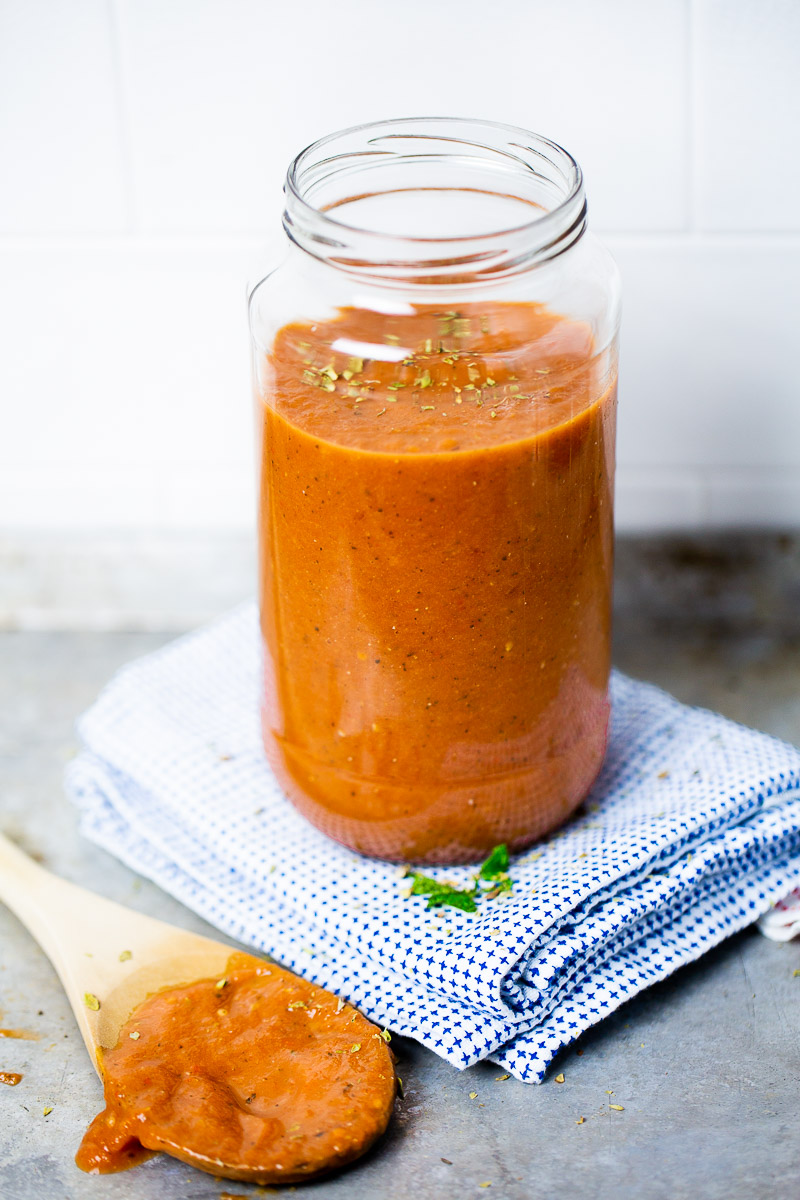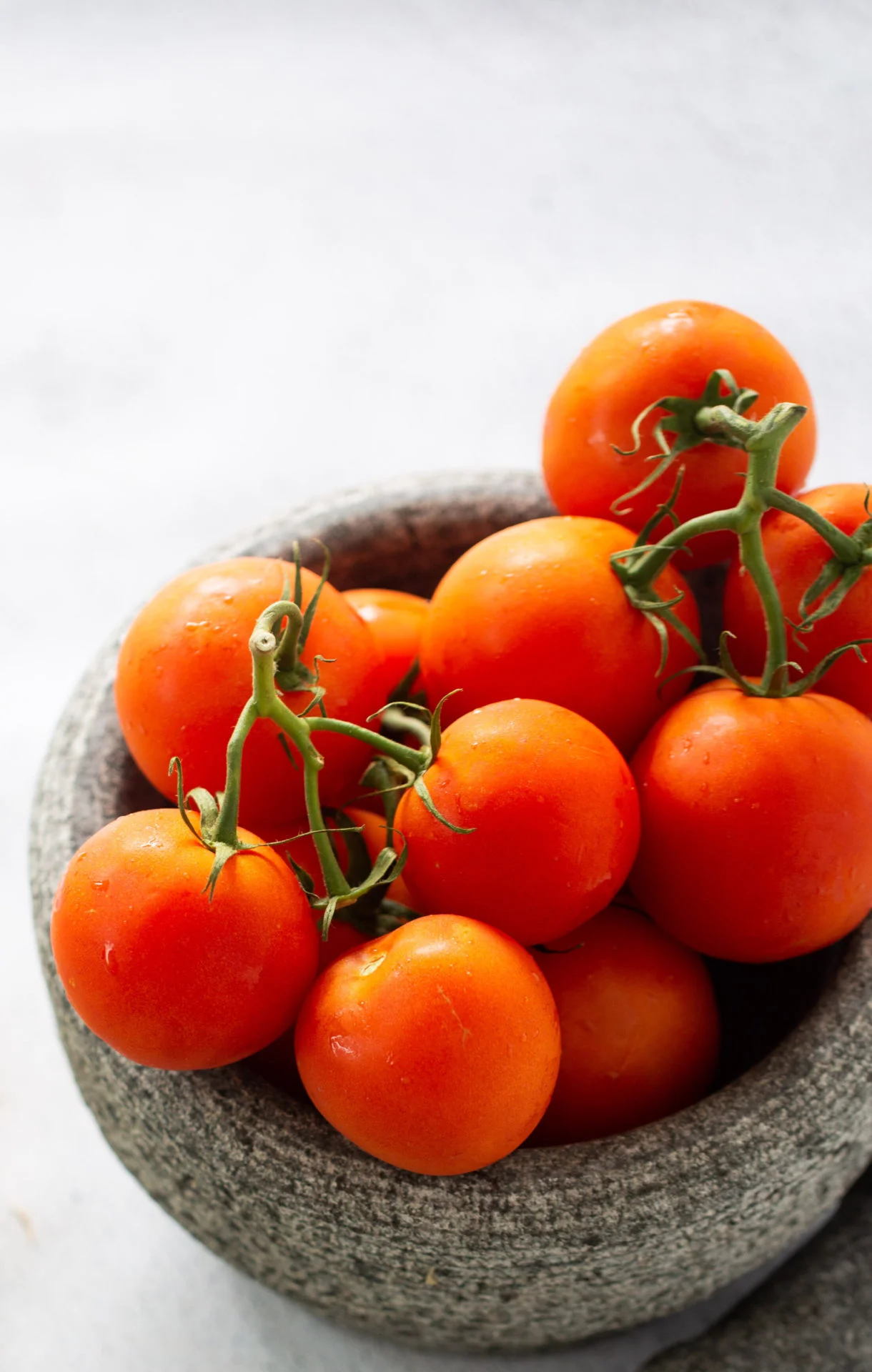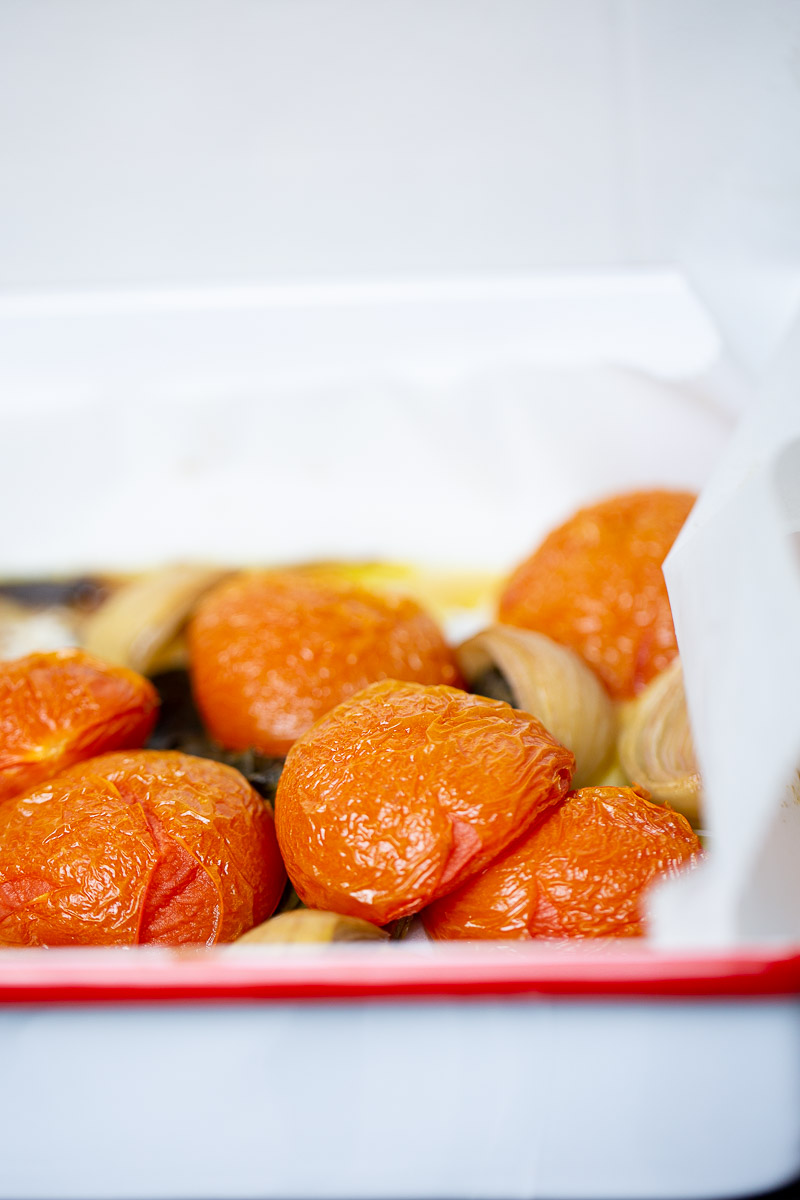
About this recipe
This roasted tomato sauce is my go-to when summer tomatoes are at their peak—or when I find a good deal at the market. Roasting the tomatoes brings out their sweetness and gives the sauce a rich, caramelized flavor that you just can’t get from canned tomatoes.
It’s the ultimate make-ahead, freezer-friendly tomato sauce that turns into pasta, pizza, soup, or even enchilada magic. No peeling, no fancy ingredients—just real, good food anytime!
Why You’ll Love This Roasted Tomato Sauce
- Big flavor, minimal effort — the oven does most of the work.
- No peeling required. Seriously, skip the mess.
- Versatile: Use it on pasta, pizza, toast, grain bowls, and more.
- Meal prep-friendly: Freeze in jars or cubes for later.
- Naturally plant-based and kid-approved.

Ingredient notes
- Tomatoes: Roma, San Marzano, or cherry tomatoes work great. Mix and match for flavor.
- Garlic & Onion: Roast them right alongside the tomatoes.
- Olive oil & salt: Simple seasonings let the tomatoes shine.
- Optional herbs: Basil, oregano, or thyme add extra depth—but totally optional.
- Red pepper flakes (optional): For a bit of heat.
HOW TO MAKE TOMATO SAUCE AT HOME?
To make the sauce, place all the ingredients in a baking dish, bake in the oven, blend, and store in a jar or use right away. It can be refrigerated or frozen for future use.

How to Roast Tomatoes for Sauce
- Preheat oven to 400°F (200°C).
- Cut the tomatoes in half or quarters, depending on their size. Leave cherry tomatoes whole or halved.
- Add garlic and onion slices to the pan.
- Drizzle with olive oil and sprinkle with salt.
- Roast for 35–45 minutes until tomatoes are jammy and caramelized.

Pro tip: For slow-roasted tomato sauce, bake at 275°F for 2.5–3 hours for deeper flavor.
How to Blend and Store the Sauce after roasting
- Blend everything in a blender or with an immersion blender.
- Taste and adjust salt or add herbs if using.
- Store in a glass jar in the fridge for up to 5 days, or freeze for 3–4 months in jars, cubes, or bags.
HOW TO USE THE HEALTHY HOMEMADE TOMATO SAUCE?
This sauce can be used in any recipe that requires tomato puree. For example, Pasta with tomato sauce and onion in a single pot, Puttanesca pasta, Ricotta stuffed shells, Pizza
Make marinara sauce, or spaghetti sauce, or use it on top of your favorite meatballs or homemade pasta. You can also use it as-is and pour it over cooked pasta for a very simple pasta recipe.
You can serve it as a soup with a vegan quesadilla or a grilled cheese sandwich. You can also use it as a base to make a vegetable soup or, if you make it without basil, for any vegan Mexican recipe.
Tips for a Perfect Sauce Every Time
- Tomato variety tip: Roma and plum tomatoes are best for thicker sauces, but cherry tomatoes add sweetness.
- Make it creamy: Add cashew cream, vegan butter, or parmesan-style cheese before blending.
- Make it spicy: Add red pepper flakes or roast a chile alongside your tomatoes.
- No blender? Mash it with a fork for a rustic sauce.

FAQs
Roasted Tomato Sauce (Oven Method)
Equipment
- Baking dish
- Blender, immersion blender or food processor
Ingredients
- 3 –4 pounds ripe tomatoes Roma, San Marzano, or cherry
- 1 small onion sliced
- 5 –6 garlic cloves peeled
- 2 tablespoons olive oil
- 1 –1½ teaspoons salt adjust to taste
- Optional: fresh basil oregano, or thyme
Instructions
- Prep oven: Preheat to 400°F (200°C). Line a large baking sheet or dish.
- Chop: Cut tomatoes in half (or quarters if large). Leave cherry tomatoes whole or halved.
- Arrange: Spread tomatoes, onion slices, and garlic on the pan. Drizzle with olive oil and sprinkle with salt.
- Roast: Bake for 35–45 minutes until tomatoes are soft, slightly caramelized, and juicy.
- Blend: Carefully transfer everything to a blender or food processor. Blend until smooth (or leave slightly chunky if preferred).
- Taste: Adjust salt, add fresh herbs if using. Use right away or cool and store.
Notes
Nutrition
information
Nutritional information of this recipe is only an estimate, the accuracy for any recipe on this site is not guaranteed.
This recipe appeared first in 2013.
